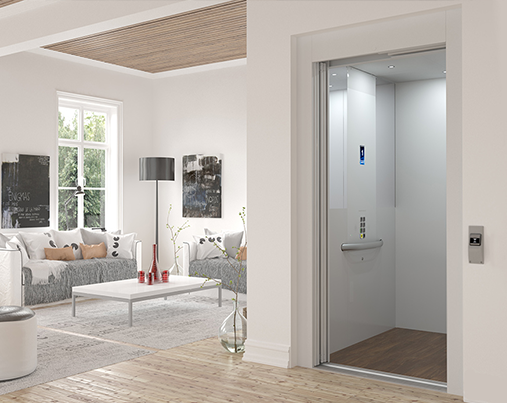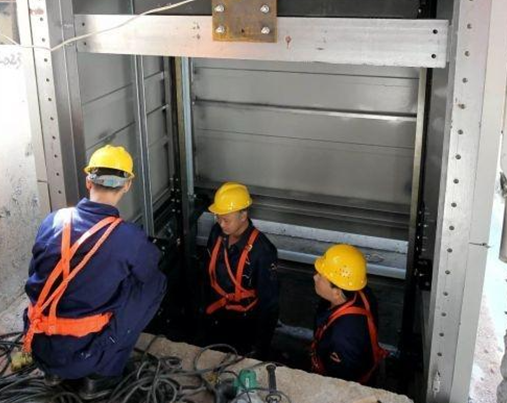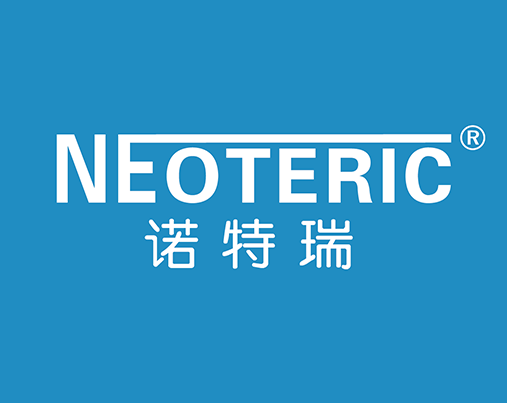

 发布时间:2024-08-01
发布时间:2024-08-01
Precautions for Elevator Installation
Installing an elevator is an important project involving safety and technology, and is critical to the functionality and convenience of a building. There are many key factors to keep in mind when performing elevator installation, including technical requirements, laws and regulations, safety standards, and project management. This article will delve into the considerations for installing elevators, aiming to provide readers with comprehensive guidance and understanding.

Part 1: Preliminary Preparation and Planning
Before installing an elevator, detailed preparation and planning must be carried out. This includes the following aspects:
1. Technical assessment and design:
- First, conduct a site survey and technical assessment to determine the feasibility of elevator installation. Consider factors such as the structure of the building, spatial layout, and power supply.
- Qualified engineers or professional teams design the elevator scheme to ensure compliance with local laws and regulations and safety standards.
2. Laws,regulations and licenses:
- Before starting elevator installation, relevant legal permits and approvals must be obtained. This may involve building permits, electrical safety certifications, and many other approvals.
3. Budget and resource allocation:
- Develop a detailed budget plan, including equipment purchases, labor costs, overhead, and possible additional costs.
- Ensure that adequate resources and funding are available to support the entire installation process.
4. Safety assessment and risk management:
- Conduct a comprehensive safety assessment to identify possible risk factors and take appropriate measures to manage and prevent them.
- Safety standards to be followed include, but are not limited to, elevator safety codes, mechanical equipment safety regulations, etc.
Part 2: The Specific Process of Elevator Installation
Once the prep and planning phase is complete, the actual elevator installation process is next. This phase includes the following key steps:
1. Equipment selection and procurement:
- According to the design scheme and technical requirements, select suitable elevator equipment and accessories.
- Ensure the quality of the equipment and the reputation of the supplier to avoid problems and delays at a later stage.
2. Site construction and installation:
- Carry out on-site construction of elevator tracks, shafts, machine rooms and other facilities in accordance with engineering design drawings and installation manuals.
- Strictly follow the safety operation procedures to ensure the safety of workers and site personnel.
3. Electricity and control system installation:
- Installation of power lines, control systems, safety devices and other key components to ensure the normal operation and safety of the elevator.
4. Testing and commissioning stage:
- After completing the installation, carry out comprehensive testing and commissioning. Including static and dynamic tests to ensure the stability and safety of the elevator under various loads and operating conditions.
Part 3: Follow-up Inspection and Maintenance
Once an elevator is installed and put into service, it does not mean that the job is over. Maintenance and supervision are key factors in ensuring the safe operation of the elevator:
1. Regular inspection and maintenance:
- Follow the established maintenance plan and carry out regular inspection and maintenance of the elevator, including lubrication of mechanical parts and testing of the electrical system.
- Ensure that the maintenance work is carried out by professional technicians or maintenance companies.
2. Emergency preparedness and response:
- Establish an emergency response plan to deal with possible elevator accidents or breakdown situations. Employees should receive appropriate training and instruction to improve their ability to respond to emergencies.
3. Monitoring and tracking:
- Use modern monitoring system and data tracking technology to monitor the operation status and performance index of elevators.
- Timely handle and record the working condition and maintenance history of the elevator to provide reference basis for future maintenance and upgrading.
Differences in the Installation of Home Elevators and Commercial Elevators
The differences in the installation of residential and commercial elevators reflect their different needs in terms of design, safety standards, usage environment and technical requirements. This article will explore these aspects in detail so that readers can fully understand the differences between the two and their specific considerations in the installation process.

Design and Space Requirements
There are significant differences in design and space requirements between residential and commercial elevators:
- Home elevators:
Home elevators are usually designed to be more sophisticated and personalized to coordinate with the design style of the home's interior. These elevators often need to be customized to fit the spatial layout and decorative needs of the home. The design focus is on providing a comfortable ride and visual aesthetics, so different decorative panels, lighting and interior finishes may be selected.
- Commercial Elevators:
Commercial elevators are more standardized and functional in design and are often used in high-rise buildings, office buildings, shopping centers and other locations. They are designed with greater load capacity and high-frequency use in mind, so the carriages are usually more spacious and able to accommodate more passengers or objects. Commercial elevators are designed with the goal of providing efficient and high volume transportation, while also needing to meet strict building codes and safety standards.
Safety Standards and Regulatory Requirements
Safety standards and regulations are important factors that should not be overlooked in elevator installation, and different types of elevators differ in their safety requirements:
- Home elevators:
Safety standards for home elevators are relatively flexible, but they still need to comply with local building codes and elevator safety standards. Basic safety features include emergency stop buttons, door locking systems, safety sensors for the elevator doors, and internal communication devices to allow for the safe evacuation of passengers in the event of an emergency.
- Commercial Elevators:
Commercial elevators typically have more stringent safety standards and must strictly comply with all government and industry-mandated safety regulations. This includes, but is not limited to, regular annual inspections, load capacity tests, elevator door closing force tests, and more. Commercial elevator safety features also include advanced emergency communication systems, automatic rescue devices, and safety measures to prevent door entrapment to ensure the safety of passengers and operators in all situations.
Use Environment and Operating Requirements
There are also significant differences between residential and commercial elevators in terms of their operating environments and requirements:
- Home elevators:
Domestic elevators are used relatively infrequently, usually to facilitate vertical transportation of family members. Therefore, they are not designed and manufactured with high frequency and high load transportation needs in mind. The design goal of home elevators is to provide convenience, comfort and safety for personal or family use.
- Commercial Elevators:
Commercial elevators are typically used in high-rise buildings or busy public places and need to withstand high-frequency and high-load usage. They must be designed and manufactured to meet the needs of large numbers of passengers for fast, efficient transportation. Operational requirements for commercial elevators include fast door opening and closing times, smooth acceleration and deceleration processes, and stable stopping positions to ensure safe and comfortable use by passengers.
Technical Requirements and Maintenance Considerations
Technical requirements and maintenance are equally critical to elevator safety and performance:
- Home elevators:
Domestic elevators may have a relatively simple and economical technical design, but still need to ensure their stability and safety. Maintenance of home elevators is relatively simple, but regular inspections and maintenance are required to ensure proper functioning.
- Commercial Elevators:
Commercial elevators are usually equipped with advanced technical support, such as electronic control systems, multiple safety detection devices and remote monitoring systems. These technical devices can provide higher operational efficiency and safety, but they also require regular inspection and maintenance by a professional maintenance team to ensure long-term stable operation of the equipment.
The differences in the installation process between domestic and commercial elevators reflect their different needs in terms of design, safety standards, usage environment and technical requirements. Choosing the right type of elevator and carrying out reasonable installation planning is the key to ensuring the long-term safe and efficient operation of elevators. As technology and safety standards continue to advance, the elevator industry will continue to provide customized solutions for different scenarios to meet the increasingly diverse vertical transportation needs of people.
Installing an elevator is a complex and delicate engineering project involving a wide range of technical, legal and safety requirements. Proper planning, construction and maintenance are key to ensuring the long-term safe and efficient operation of elevators. By strictly adhering to the relevant standards and procedures, the risk of accidents can be effectively reduced and the overall value and functionality of the building can be enhanced. We hope that this article will provide readers with valuable reference and guidance during future elevator installations.
Neoteric Pursuit of Building High Quality Elevators
In modern society, elevators, as an indispensable means of transportation in people's daily lives, have a direct impact on the quality and performance of each passenger's comfort and safety. As an elevator company pursuing high quality, we are committed to providing our customers with superior products and services that add value and convenience to buildings.

Pursuing Excellence
Our elevators are more than just a simple transportation facility; they are a precision engineering art. Each elevator is rigorously designed, manufactured and tested to ensure stable operation under a variety of conditions. Whether it is a high-rise office building, a shopping center or a residential building, our elevators are perfectly adapted to and provide excellent performance.
Safety and Reliability
We regard safety as our priority, and all our elevators are equipped with advanced safety facilities and systems. From emergency stop devices to elevator door safety systems, every detail is carefully designed to ensure that passengers can safely use the elevator under any circumstances. In addition, our elevators are equipped with advanced control technology and intelligent monitoring systems to enhance the stability and reliability of operation.
Design and Comfortable
Elevators should not only be powerful, but also beautiful and comfortable. We pay attention to design details and carefully select materials and interiors to ensure that each elevator harmonizes with the overall style and environment of the building. From the interior of the car to the exterior decoration, we are committed to providing customers with a pleasant riding experience.
Environmental Protection and Energy Saving
We are concerned about environmental protection and sustainable development, and all elevators comply with updated energy efficiency standards and environmental requirements. We adopt advanced energy-saving technologies to reduce energy consumption and emissions, saving costs for our customers while actively responding to global environmental initiatives.
Customer First
As a customer-first company, we focus on communication and understanding with our customers. We not only provide our customers with high quality products, but also offer a full range of after-sales service and regular maintenance to ensure that the elevators are always in better condition and provide reliable support for our customers' life and work.
Whether it's a new construction project or an upgrade of an existing building, we can tailor-make a more suitable elevator solution for you. Choose us, choose high quality and excellent service, let us work together to build a safer and more comfortable transportation environment in the future.